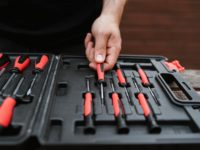Welding is one of those things we tend not to think about until we need some welding work done. After that, we notice this trade scattered all throughout our life; many aspects of everyday living wouldn’t be possible without welding. Once your eyes are opened to the world of welding, there seems to be an endless amount of things to learn. The following will explore some new and interesting things about welding.
Plastic Can Be Welded
Many of us think about welding as something that revolves around metals, and while this is true to an extent, there are other materials that welding can be used to fuse. Thermoplastics have a different structure than the plastics that we envision when we hear the word. Because of this difference, thermoplastics have a melting point far higher than standard plastic and can be welded using a process called thermoforming. In addition to metal and thermoplastics, lead glass tubes can also be welded together.
Welding Safely Requires A Fair Bit Of Equipment
To get a welding job done safe and sound, there are several personal protective items that people need to have handy. This equipment includes a welding helmet or goggles or face shield, some form of hearing protection (prolonged welding can cause hearing loss), a welding respirator (to avoid inhaling welding fumes), welding gloves, a welding jacket, or clothing like an apron that protects you from sparks and is fire-resistant, and welding boots. You want your entire body protected at any given moment from sparks and nothing flammable nearby.
Given the safety concerns surrounding welding, it’s important that you ensure you know what you’re doing when you decide to weld something. Welders at Welding Headquarters recommend seeking out the highest quality protective gear you can find and understand the basics of first aid. A fire extinguisher is also absolutely necessary to have nearby.
Welding Has A Long History
Believe it or not, welding isn’t an industrial revolution skill. The earliest signs of welding date all the way back to the 300s. The Iron Pillar of Delhi was welded using what is called “forge welding” and is the earliest example we have of human welding. Of course, as with any historical artifact, it is possible the technique was used earlier, or in other locations, only this is the first remnant that we know of to have survived.
People Have Welded In Space
Welding in space is quite a strange phenomenon, but it can happen. It’s called “cold welding,” and it involves two metals coming in contact within outer space. When this happens, the two separate pieces can fuse together without needing any additional melting. If this idea freaks you out, don’t worry too much, it doesn’t often happen in outer space.
Welding Arcs Produce Radiation
It’s important to understand that anything that creates both light and heat is also producing radiation—welding is no exception. The UV radiation created by welding arcs can damage your skin the same way the radiation from the sun can damage your skin, resulting in an increased risk of skin cancer. Many welders focus on protecting the parts of their body that could be exposed to sparks or burns, but when welding, all of you should be covered to reduce UV exposure.
People Can Weld Underwater
It might seem physically impossible to weld underwater, but it isn’t. “Hyperbaric welding” is a process whereby things can be welded at elevated pressure levels. It can occur both within a wet environment or inside an enclosure specifically constructed to keep the surrounding area dry. This type of welding is particularly commonly used to repair ships and offshore platforms and pipelines.
There Are Robots That Weld
Believe it or not, humans aren’t the only ones who weld. There are robotic welding machines that exist and do the work as well. While we’re nowhere near fully automating the welding industry, it is interesting to notice the occasional robotic welding arm.
Safety Must Come First
Before wrapping things up, it is important that we emphasize again how crucial it is that you ensure you’re properly trained and have all the necessary safety equipment on properly before you begin a welding task. If there is concern about hazardous materials or biological and chemical agents a biohazard suit must be worn. If you feel unsure about welding in a particular instance, it’s always best to get a second opinion.
The above information should have given you a few fun facts about welding as well as some practical tips if you’re interested in doing the work yourself. Of course, the world of welding is far more in-depth than just this, and dozens of types of welding exist.
















